Rudbeckia Hirta Profile
Written by Lisa
Nov 05 2021
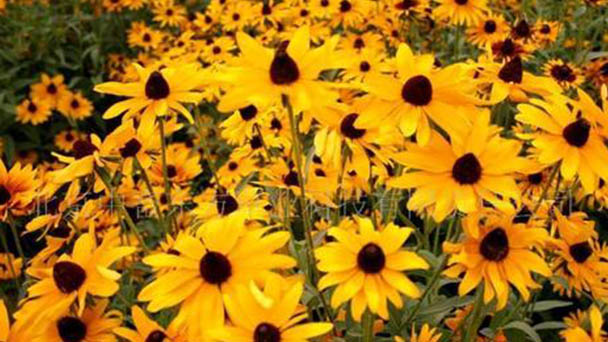
Rudbeckia belongs to the compositae genus, one or two-year herb. The center of the flower is uplifted, purple-brown, and the peripheral petal-like flowers are golden yellow. The flowering period of Rudbeckia Hirta is long, from early summer to frost. The flowers are gorgeous.
Rudbeckia Hirta Picture
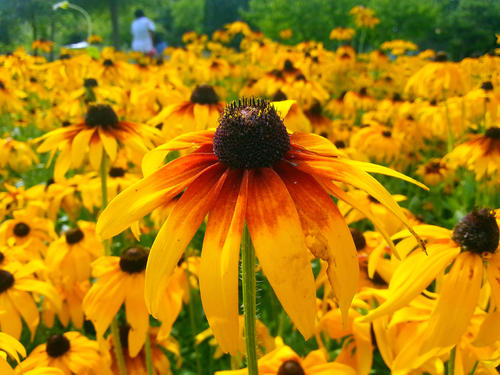
Rudbeckia Hirta Morphological characteristics
Rudbeckia Hirta is 60-100cm tall with 8-9cm flower head, double-petaled flowers. The stem is thicker, soft, slightly branched, and winged. The alternate leaves are rough, oblong to narrowly lanceolate, 10~15cm long, and the leaf base extends until the stem is wing-shaped, pinnately divided, 5-7-lobed, and stem leaves are 3-5-lobed, with sparsely serrated edges.
The whole plant is hairy, leaves near the root, and the upper leaves are alternate, the leaves are spoon-shaped and broad-lanceolate, and the leaf margins have coarse teeth. Flower head, about 2.5~5cm in diameter, corymbia inserted, with short peduncles; lingual flowers are neutral, 1.5~2cm long, yellow, brown-purple or with two-color stripes; tubular flowers are brown to purple, densely rounded Spherical; sown in spring and autumn, flowering period spans from summer to autumn, cold and drought-resistant, extensive management, clump planting, road greening, flower beds, flower borders, and grass side plants. It can also be used as cut flowers, overwintering in the open, and self-seeding and breeding.
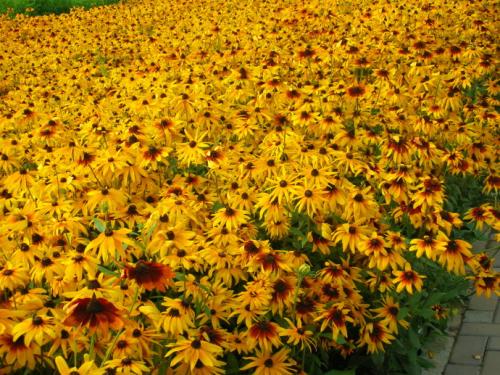
Reproduction of Rudbeckia Hirta
Sowing reproduction
The planting time of Rudbeckia Hirta is generally in spring and autumn. March and September are the best sowing times for natural growth. The planting time is closely related to its natural flowering period. If it is planted in March, it blooms from June to July. If it is planted in September or planted in the pot in November, it blooms in the following spring (May to June). In order to ensure that the Rudbeckia Hirta is strong and the flowers are big and colorful, transplantation should be performed once after 4 to 5 leaves have grown after sowing. (Find more fall plants here.)
Ramet propagation
It can be carried out in spring and autumn, and the perennial plants are generally divided.
Cutting propagation
Generally, new shoots sprouting from the roots are selected as cuttings, which can be carried out in spring or autumn. It should be done in spring when the buds are drawn to about 15cm, and in autumn after the rhizosphere has germinated after flowering.
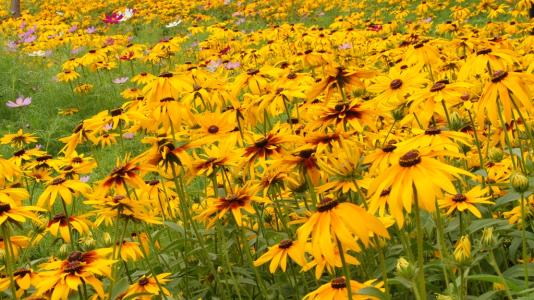
Rudbeckia Hirta Garden Application
Rudbeckia Hirta are prosperous, suitable for garden layout, flower border materials, or arranging the edge of the grass for natural planting.
The Rudbeckia Hirta is an award-winning variety in Europe, and has won AAS Winner and Fleuroselect Awards. These strains can provide a variety of varieties and provide customers with a variety of excellent choices. They can be used as window sill plants, park potted plants, regional planting or background plants, as well as main flower planting or mass cultivation. Rudbeckia Hirta flowers have the following outstanding advantages:
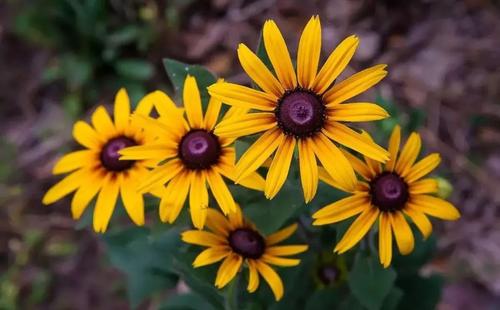
- With bright colors, Rudbeckia Hirta greatly improves the attractiveness of the appearance.
- The continuous flowering time is very long, which increases sales opportunities.
- Rudbeckia Hirta is an award-winning variety in European gardens, and their excellent characteristics have been recognized.
- There are a wide selection of growth habits and flower formation, so it has the possibility of widespread use.
- Rudbeckia Hirta has good heat resistance and durability, increasing consumer satisfaction.
Top 30 Fall Flowers to Plant - Beautiful Autumn Flowers
30 Fall Plants for a Beautiful Fall Garden
Latest Updated
- Benefits of Bugleweed - 7 Science-backed Health Benefits
- Bugleweed Dangers & Side Effects - Is It Poisonous?
- How to Plant Evergreen Trees - What You Should Know
- When to Plant Evergreens - Grow Guide for Evergreen Trees
- 12 Wonderful Evergreen Shrubs for Your Garden
- 12 Popular Evergreen Plants with Pictures for Beginners
- When And How To Prune A Lilac Bush Like a Pro
- How to Grow & Care for Lilac Vine (Hardenbergia Violacea)
- Japanese Lilac Tree (Syringa Reticulata) Care & Propagation Guide
- Shumard Oak Pros and Cons - What to Know
Popular Articles
- Winter maintenance of Antirrhinum Majus
- How to Grow Terminalia Mantaly Tree
- How to Grow and Care for Crossostephium Chinense
- How to grow Antirrhinum Majus in spring
- Peristeria Elata (Dove Orchid) Profile: Info & Care Guide
- Underwatered Snake Plant (Sansevieria Trifasciata) - Signs And How To Fix
- How to Care for Brazilian Jasmine Plant (Mandevilla Sanderi)
- How to Grow & Care for Graptopetalum Purple Delight in Summer
- Rosa Chinensis (China Rose): Plant Growing & Care Tips
- How to Care for Baby Sun Rose (Aptenia Cordifolia)